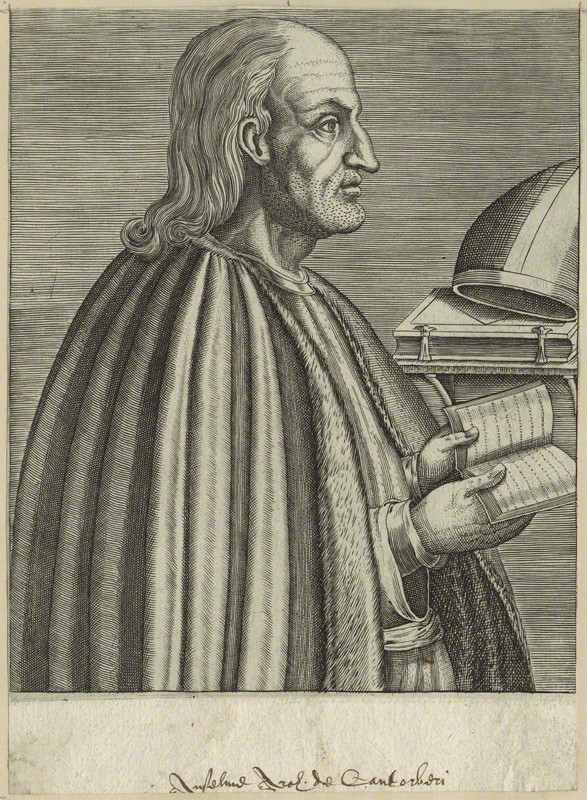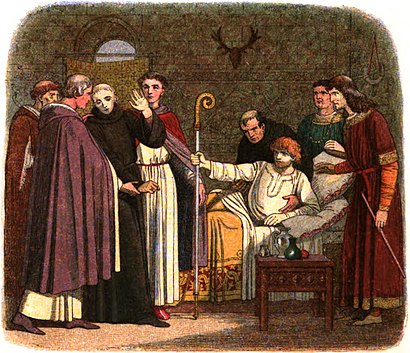A Theologian of Proofs

Saint Anselm of Canterbury was a monk and theologian of the eleventh century who was not only a controversial figure in his own day—he was exiled from England multiple times—but has also continued to be a polarizing figure in theological circles until the present day. His unique and “out-of-the-box” writings paved a new path within theological thought and were therefore appreciated by many, even though they pushed the bounds of Christianity at his time.
Anselm was born in Italy in 1033. He entered the intellectual sphere as a young man in pursuit of a master to learn from. After a period of searching, Anselm found Lanfranc, the prior of a monastery in Bec. Anselm moved there and joined the Benedictine order. As a pupil of Lanfranc, Anselm learned quickly and soon made it apparent that his abilities were equal to that of his master. The monastery was not big enough for the two of them, but this issue was resolved when Lanfranc was appointed archbishop of Canterbury. Anselm would later follow in his footsteps after Lanfranc’s death.
Anselm was appointed abbot and assumed the responsibilities of a teacher of the monks. Here was one of the moments in which he demonstrated his originality and brought to the monks a remarkably new method of instruction. His style took the form of Socratic questioning, and the students were invited to debate with Anselm. This strategy was considered quite difficult for them, and many remarked how Anselm planted the seed that the students then watered with their tears. Anselm was a deep thinker and knew how to invite his students into the same art.
As a theologian, Anselm was known for how he didn’t necessarily appeal to the authority of his forefathers, as was the status quo for his day, but instead formed an argument that relied on the validity of its own logic. One of his most famous results of this task was his ontological argument for the proof of God’s existence: God exists because he is the being than which no greater can be conceived.
Another of Anselm’s long-standing contributions was his writing Cur Deus Homo “Why God Became Man” which has formed a framework for talking about salvation in the West for centuries. In it, Anselm concluded that Jesus alone could reconcile man’s relationship with God because Jesus was equal in honor to God but also human. Thus, Anselm argued that he could pay humanity’s debt of sin against God’s honor.
A Brief History
The Lutheran church commemorates St. Anselm on April 21st, the day of his natural death and entrance into eternal glory on the Wednesday of Holy Week, 1109.
Anselm was deeply influenced by Augustine, coining the famous phrase after Augustine’s theology, “fides quaerens intellectum,” meaning that faith seeks understanding. The phrase captures Anselm’s effort to prove that faith simply trusts, a concept that Lutherans especially appreciate. Therefore, Lutherans can give thanks for Anselm’s apologetics, writings, and work as archbishop, even as we often desire to place our own theological emphases elsewhere. Rather than starting with abstract reason, as Anselm sought to do in his various works, we understand that the Church centers its reflection on what Jesus has done, whether reason can prove it or not.

To this day the West, and Lutherans included, confesses the Filioque in the Nicene creed (that the Spirit precedes from the Father and the Son) in part thanks to Anselm who defended this doctrine at the request of Pope Urban II during the time of schism between the Eastern and Western churches.

Collect
O Almighty God, who didst gladden us by the annual feast of Blessed Anselm, Thy Confessor: mercifully grant that we may imitate his example, whose heavenly birthday we celebrate; through Jesus Christ, Thy Son, our Lord, who liveth and reigneth with Thee and the Holy Ghost: ever one God, world without end. Amen.
Lessons
Resources
Issues, Etc. interview with the Rev. Dr. Dr. Burnell Eckardt on Eleventh Century Archbishop of Canterbury, Anselm
Issues, Etc. interview with Dr. Matthew Phillips on Anselm of Canterbury
Propers found in Daily Divine Service Book: A Lutheran Daily Missal, edited by the Rev. Heath Curtis
References:
1. Evans, G. R., The Medieval Theologians. Blackwell Publishing. 2001.
2. Pfatteicher, Philip H. Festivals and Commemorations. Augsburg Publishing House. 1980.
Images:
1. Anselm Assuming the Pallium in Canterbury Cathedral, E. M. Wilmot-Buxton, England, 1915.
2. Anselme Arch. de Cantorberi, Unknown, Italy, ca. 16th century.
3. William II; Anselm Made Archbishop of Canterbury, James William Edmund Doyle, England, 1864.
Some links might be affiliate links which means we may receive a small commission at no extra cost to you. As an Amazon Associate we earn from qualifying purchases.



